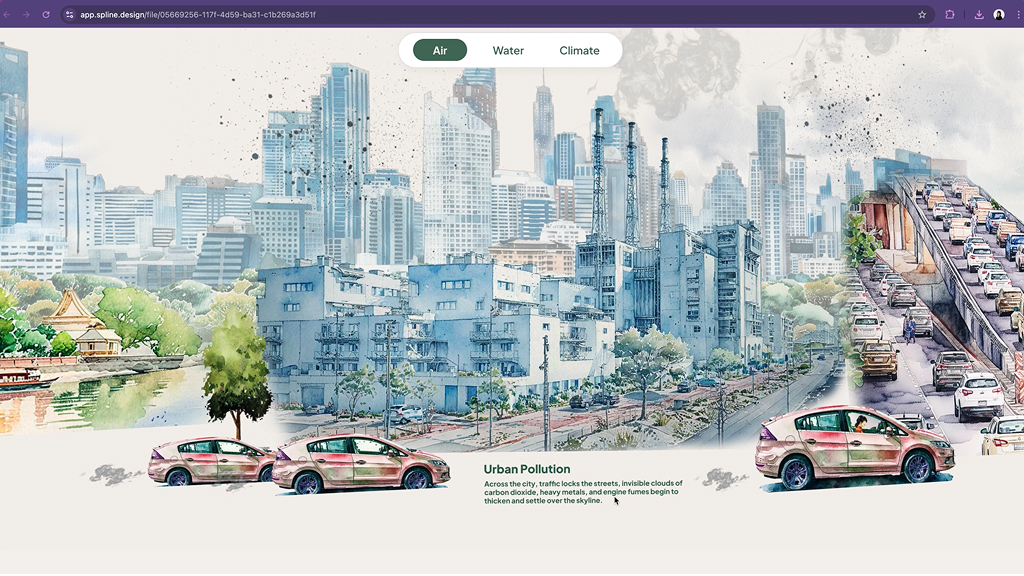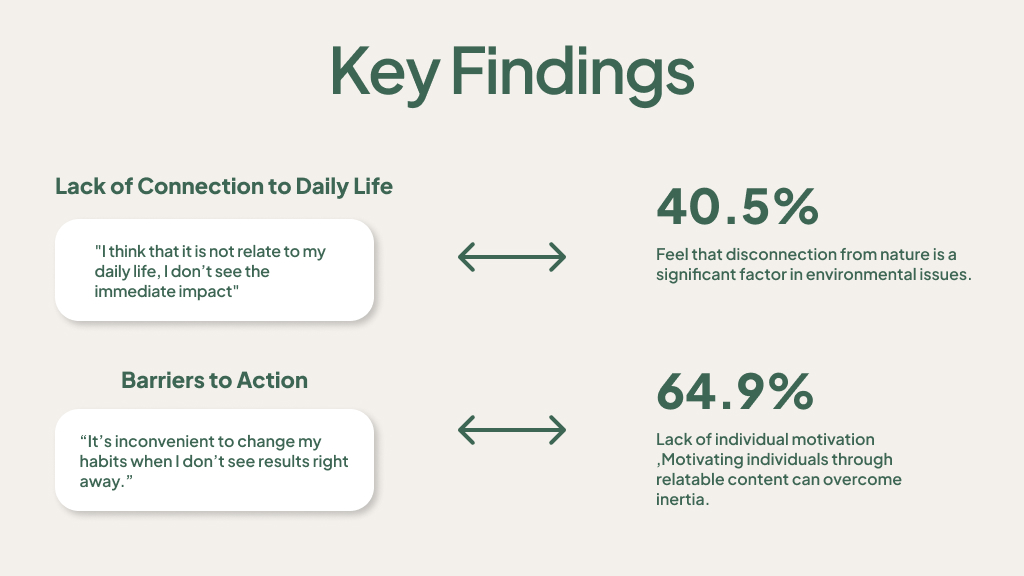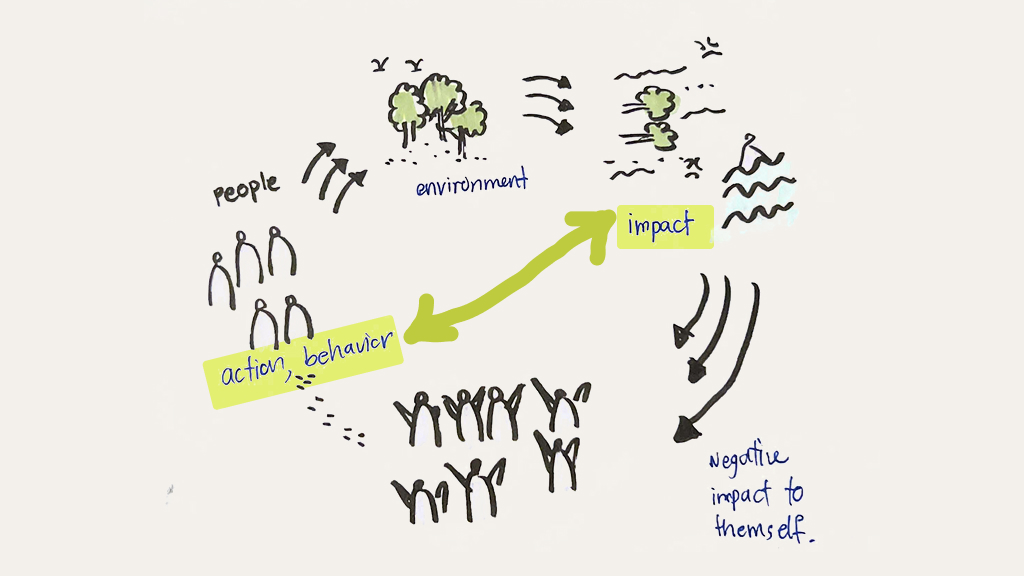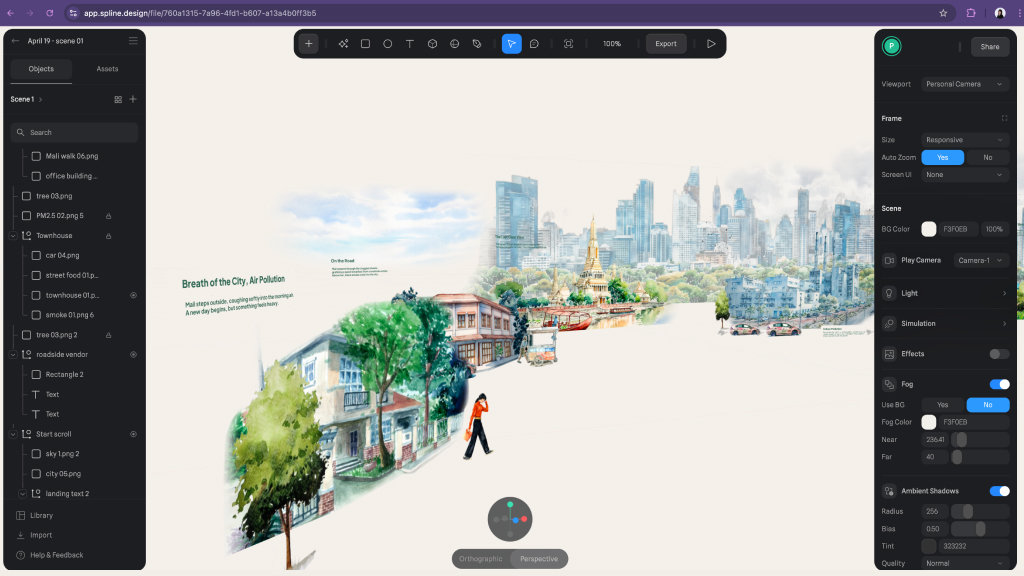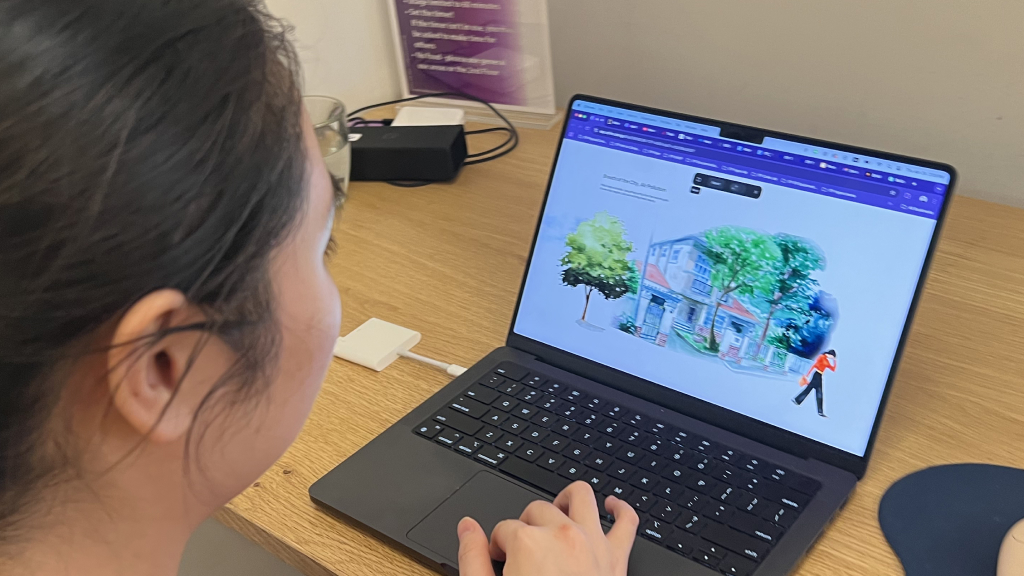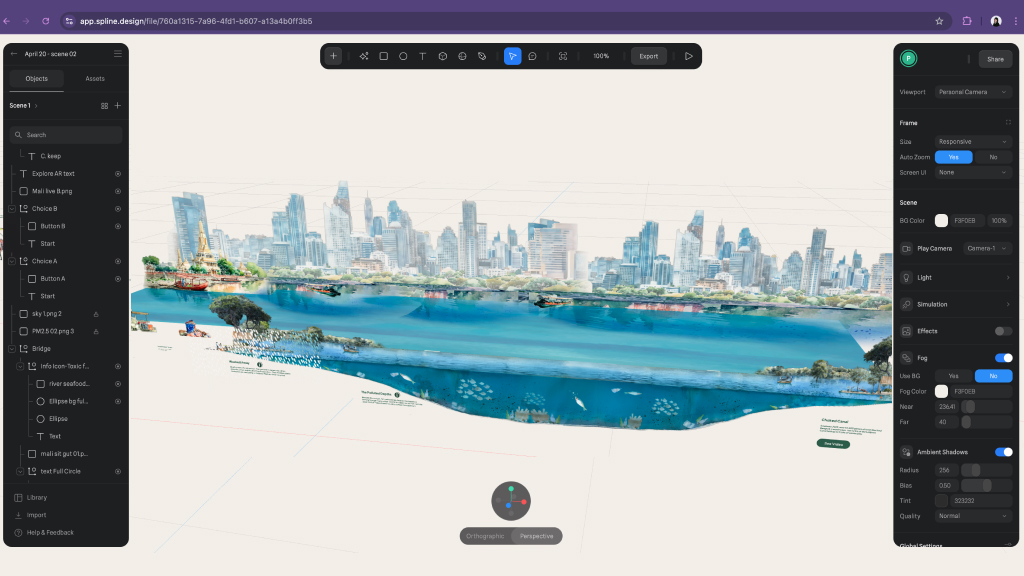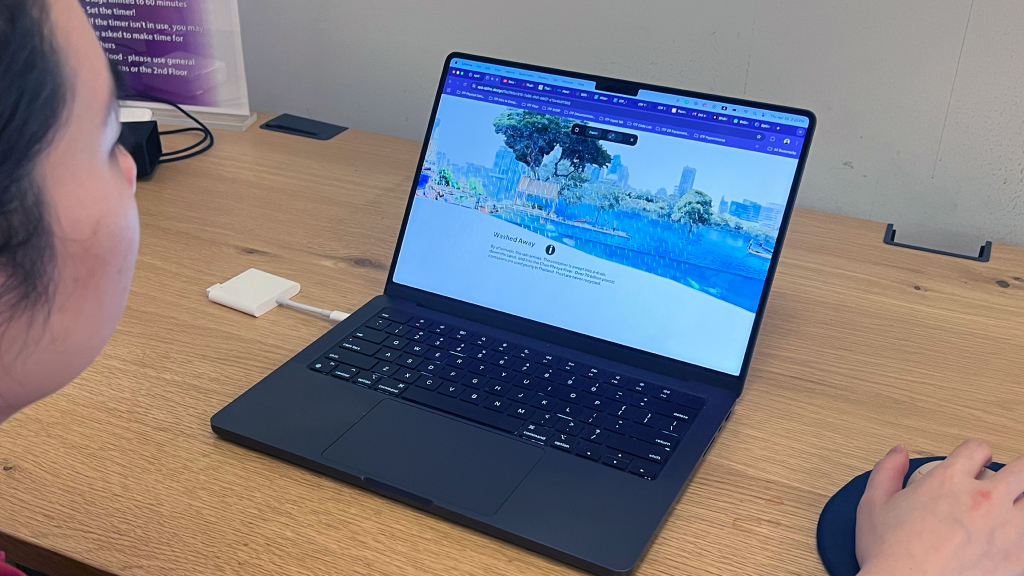A Day, A Choice, A Future
Penny Kasinphila
Advisor: Sharleen Smith
This thesis explores how emotionally-driven, interactive storytelling can raise environmental awareness and inspire sustainable urban behavior. By letting users experience the real-time impact of their daily choices through immersive 3D web experiences, the project aims to reconnect people with nature and encourage long-term behavioral change.
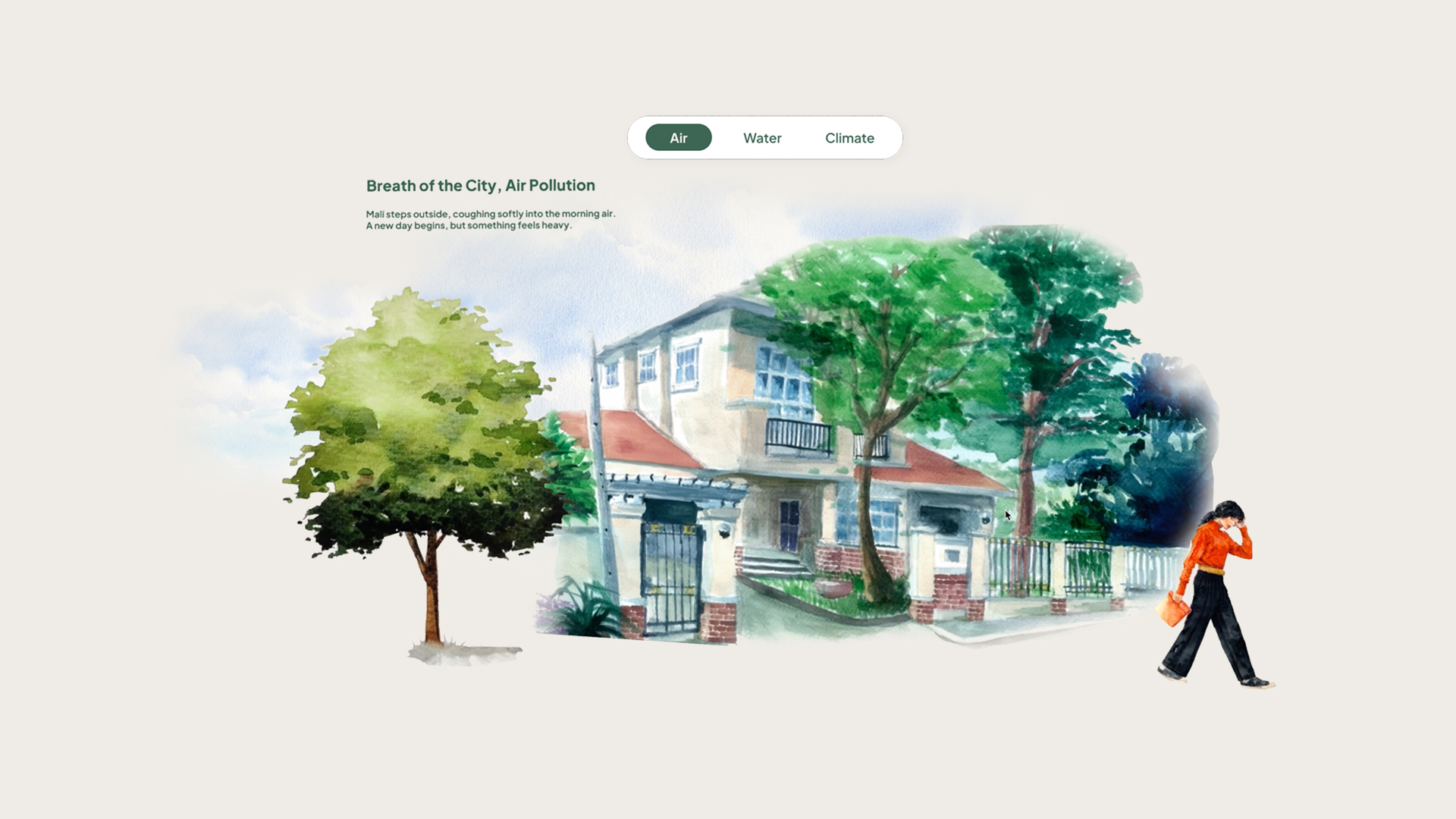
Project Description
What if everyday actions, like traveling by car, using a plastic cup, tossing out lunch waste into an overflowing bin, or contributing to agricultural burning, could shape not just the environment, but your own health and future?
"A Day, A Choice, A Future" is a 3D interactive web experience that invites users to step into a day in Bangkok, Thailand, and explore how small personal decisions ripple out to affect the air we breathe, the rivers we rely on, and the food we eat. Through immersive storytelling and environmental data, users follow the story of Mali, a city resident whose daily choices unfold into unexpected consequences.
Inspired by my background in landscape architecture and UX/UI design, and my own experiences growing up between Bangkok and rural Thailand, this project seeks to reconnect urban dwellers with the natural systems they depend on. By transforming passive awareness into interactive reflection, "A Day, A Choice, A Future" helps users see their role in the environmental loop, and empowers them to change it.
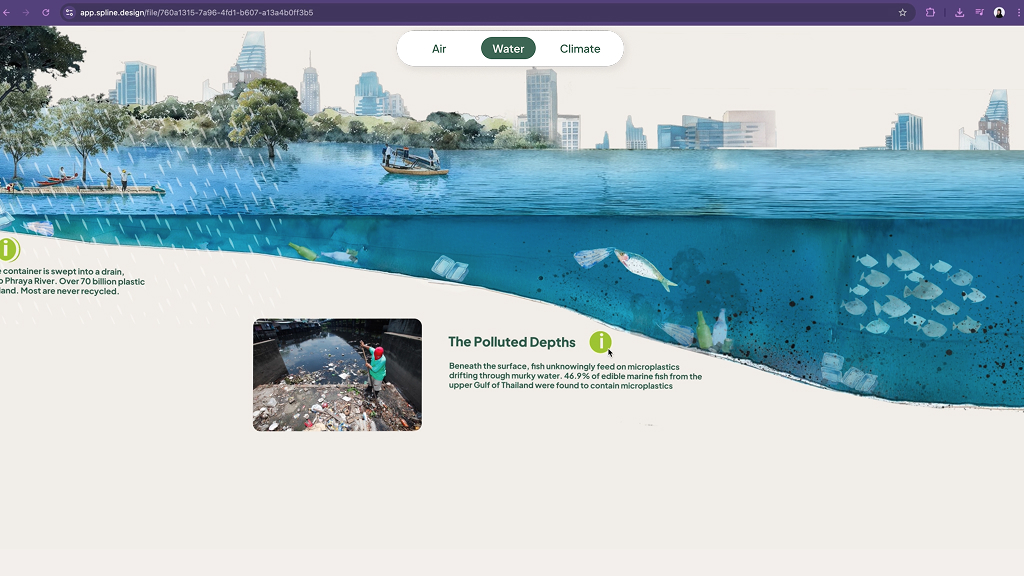
Technical Details
1. Painted watercolors and created hand-drawn sketches, which were enhanced using Reindair AI to generate painting styles, then collaged together in Photoshop.
2.Spline 3D: Used to create immersive, interactive 3D scenes and environments for web-based storytelling.
3.Figma: Used for UX/UI design, prototyping, and user flow planning.
4.Framer: Integrated to publish and structure the final interactive website experience.
5.Web Embeds & Links: External sustainable action resources are embedded to connect storytelling to real-world impact
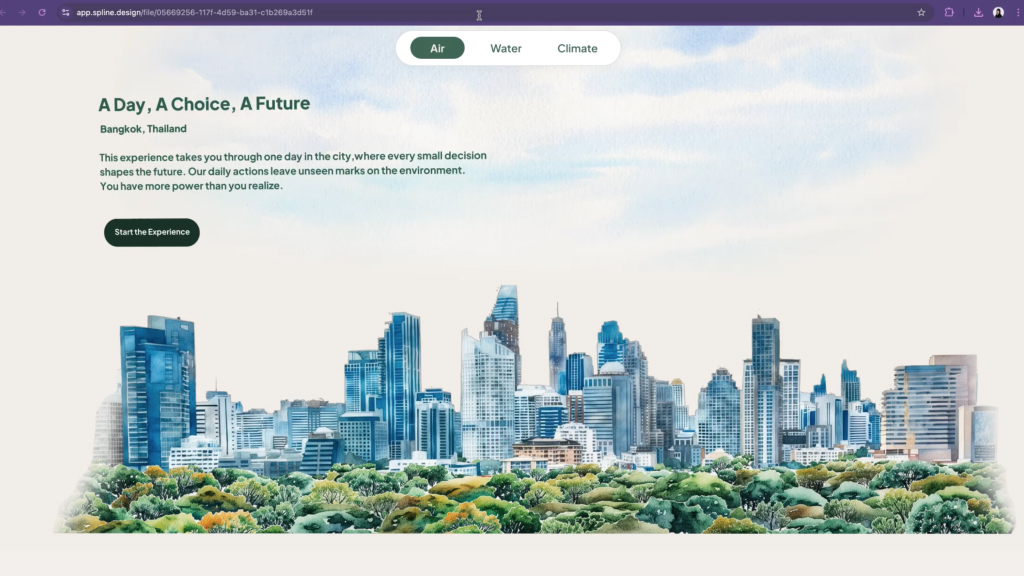
Research/Context
How might we raise awareness about environmental issues in a way that inspires people to take sustainable actions? To explore this, I conducted both qualitative interviews and quantitative surveys. Through affinity mapping, I uncovered key insights: while most participants were aware of environmental problems like air pollution and plastic waste, many felt personally disconnected from their impact. These issues were often perceived as distant, abstract, or unrelated to daily life. A lack of urgency and clarity on what actions to take further prevented engagement.
However, participants responded most strongly to emotional triggers, such as stories of animals harmed by plastic, floods in their neighborhoods, or personal health impacts like lung problems. These findings directly shaped the project’s narrative structure and interaction design.
1. Awareness (WHAT): Storytelling and visuals show how small actions like driving or using plastic harm the environment.
2. Interest (WHY): Users relate Mali’s story to their own lives, recognizing personal impact.
3. Consideration (HOW): Sustainable alternatives are presented with supporting data.
4. Decision: Users choose actions and see the consequences on the website, with links to real-world resources.
Drawing on my background in landscape architecture and UX/UI design, this project aims to bridge the emotional gap between global environmental issues and individual behavior. By visualizing the invisible loop, how human actions impact the environment and return to affect us, the project makes systemic issues feel personal, real, and changeable.
